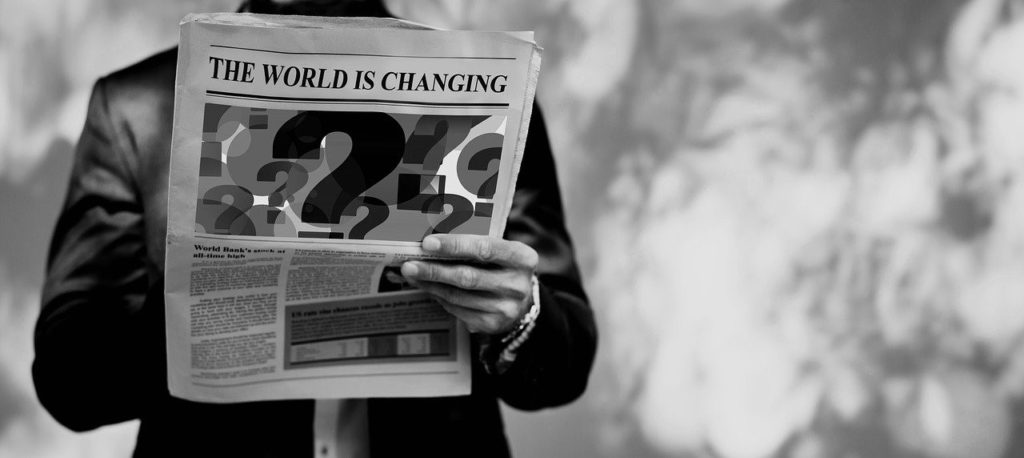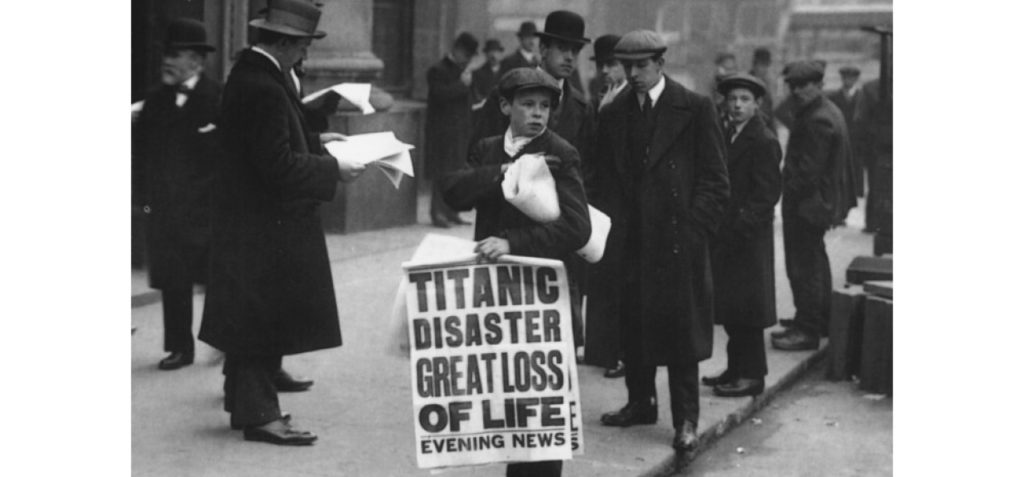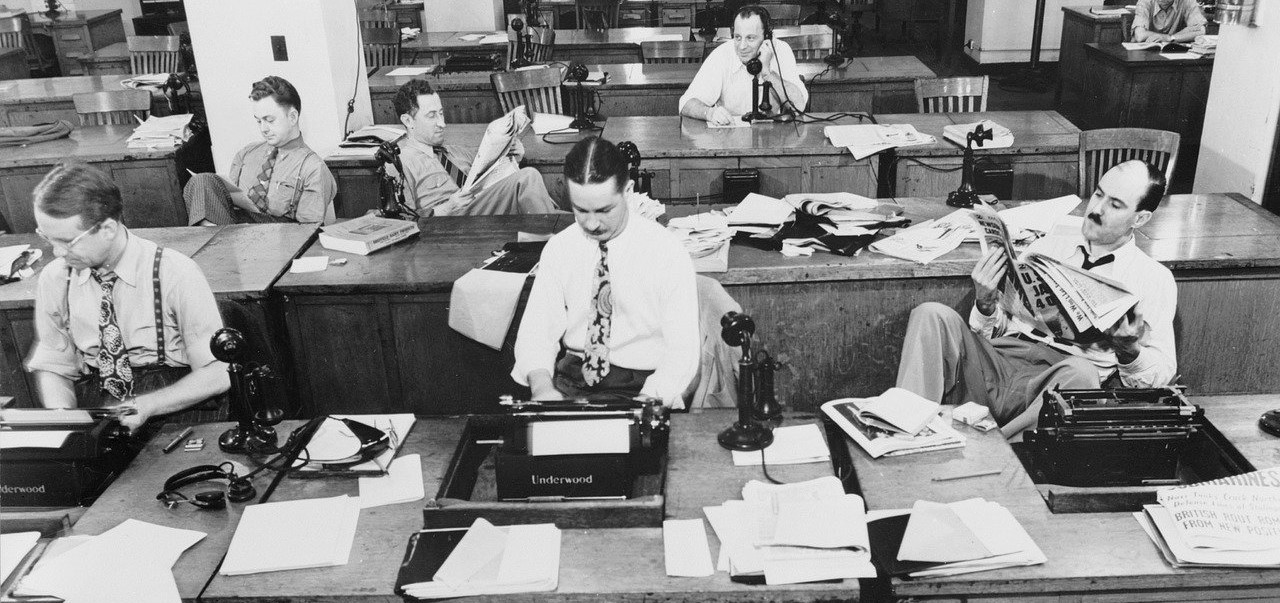News is pretty fun these days. My SmartNews App shows me all the stories I want to see – I like to keep up on those wacky Q-Anon guys. Oh, and did you hear that some lady is claiming to be the secret queen of Canada?
I really enjoy the stories of politicians getting in trouble. Or being made fun of…or both.
Somehow, half of my newsfeed is Funny Tweets. Hilarious, but not news.
I’ve never been so uninformed. News today sucks.

I need to catch up with the world – be more worldly. Sophisticated.
Here’s an idea: I’ll watch the news on television. I like to switch between CNN and Fox News, you know, so I can get the full picture. Hear both sides, and all that.
Should I watch Tucker Carlson? How is The Left actively ruining my life and surreptitiously erasing my freedoms today? Maybe I should watch Rachel Maddow, to get the lowdown on how The Right is ruining my life and taking my freedoms. Tough choice.
You know, in some other countries, average citizens can name our President. Do you know who the President of Mexico is? Mexico is right next to us.
Canada has a Prime Minister. I know he’s young and handsome, but not much else. For some reason, I’m reading about Canada’s fake secret queen.
It wasn’t always like this.
Headlines sell papes
“Papes”. That’s what the newsies called newspapers in the early 1900s. Newsies were the young boys that hawked papers on the street corners yelling, “Extra! Extra! Read all about it!”
While we are talking newsies, I have to share this musical number from the 1992 movie “Newsies” starring Christian Bale. Enjoy.
Those were the days of yellow journalism and sensationalism. Hearst and Pulitzer were fighting for market share in New York City.
Subscriptions were uncommon and newspapers made money primarily through advertising. When papers are sold one at a time, the headlines have to inspire a purchase each and every day. So, if there isn’t anything too interesting going on, well, you have to make something up. It’s rough on those days when no one is murdered and nations are at peace.
It was never blatant lies, of course, it was just a little…sensationalized. Exaggerated. If some politician says something that could be construed as a possibility of war – sometime in the future, maybe – well then, you better believe “WAR” was in the headline. Boom. Sales.
It’s not misleading if you explain the details in the article. People read the articles, right?
Back then, the priority of the news organizations was to sell, not to inform. You could say the news sucked back then. But it got better.
Like and subscribe
During the Great Depression, advertising was harder to come by, so subscriptions became a larger income source.
When people have already paid for their daily newspaper, when they select one newspaper to read every day, credibility becomes more important than titillating headlines. Tabloids are fun, but for news, The Washington Post or The New York Times was where it’s at. The news you could trust.
In the mid-1900s, people trusted the news. Walter Cronkite was “the most trusted man in America”. People watched him on TV and they believed what he said. It helped that what he said was corroborated with well-researched information. Journalists were sourcing and fact-checking and reporting what they knew to be true.
My parents watched the news on weekday evenings and it was soooo boring. They knew it, too. But they didn’t watch to be entertained. They watched to be informed.
At that time, the goal of news, both network news and newspapers, was to inform the public. They wanted market share and ratings, yes. That was achieved by being informative and credible.
For a while, the news didn’t suck.
Enter cable TV
Before the 1990s, network news operated at a loss. Networks – mainly the Big 3: ABC, NBC, and CBS – made plenty of money from sports and entertainment programming. The news was a public service, not a profit-driven business.

But that was when we had 12 channels. Not 500.
When cable television was in nearly every American home, the competition for ratings threatened the major networks. For the first time, network viewership was on the decline. Except for the news.
People were still getting their news from the networks. Suddenly, the news was the programming with ratings. Suddenly, the news needed to be profitable. The dynamics changed.
I came across this Neiman Reports article written in 1999 regarding the transformation of network news. The author poses the question:
“Is this possibly the best of times for network news, since as the news becomes more profitable, its status will rise within the corporation, and with increased status will come a finer product? Or is this a troubled time for network news, as old-fashioned values of public service that once guided news judgment cede ground to business-driven imperatives?”
Marc Gunther, “The Transformation of Network News”, NeimanReports.org, June 15, 1999
Oh, Neiman Reports. It was the latter.
24-hour news
In the ‘90s, a new monster gained popularity.
People started turning to the 24-hour news channels. It may have been a blow to the networks, but it was a blow to the news-minded public, too.
Just like in the newsie’s days 100 years ago, the 24-hour news had to constantly sell itself. The “Look at me! Look at me!” constant news reporting required stretching, embellishing, sensationalizing.
Have you noticed how it takes the news anchors two minutes to report on the news and six hours to provide commentary on it? Yeah.
Besides the embellishment of general news, these channels have a lot of pressure to release Breaking News ASAP. They must be first to report. Do they have time to fully vet their sources and fact-check their information? Probably not.
That’s okay! Here’s the great part: It doesn’t have to be completely accurate. Why? Because they will be there, ready to make up-to-the-minute corrections!
Uh oh.
Headlines sell clicks
Something happened with the rise of the internet.
Up to the minute reports, all for free, all the time. Yahoo! News, the Huffington Post, Buzzfeed, CNN.com.
Do we trust them? Can we tell the difference between them? Do we know how to evaluate sources?
In the days of Peter Jennings, Tom Brokaw, and Dan Rather, we didn’t evaluate sources. We believed what we heard. We trusted.
Now we don’t trust, or at least, we don’t know who to trust.
Can we trust it if it’s free? News doesn’t make money by subscription anymore, it’s advertising again.
It’s a pay-per-click system. Headlines flood our newsfeeds and social media like newsies shouting on the street corner, “Click me! Click me! Read all about it!” The best headline wins.

And worse, the fast-paced nature of news has developed what is called iterative journalism. Like the 24-hour news’ Breaking News philosophy, any incomplete or misreporting can be corrected later. Being first is the priority. Headline first, fact-checking and source-vetting later.
We should not trust. We should be wary. There may be….alternative facts…? Arguments erupt with families and friends over what is true and what is fake news. We can’t talk about news anymore.
The priority is not to inform. This is a for-profit business selling news one click at a time.
AI makes it worse, giving me more of what I click. AI creates confirmation bias, misinformation, disinformation, and huge gaps of information.
I’m dumber. I know it.
I can’t even name the queen of Canada.
The news sucks.
Is it even news anymore?
One thing is certain. You get what you pay for. And we aren’t paying for news. Maybe we should be.
